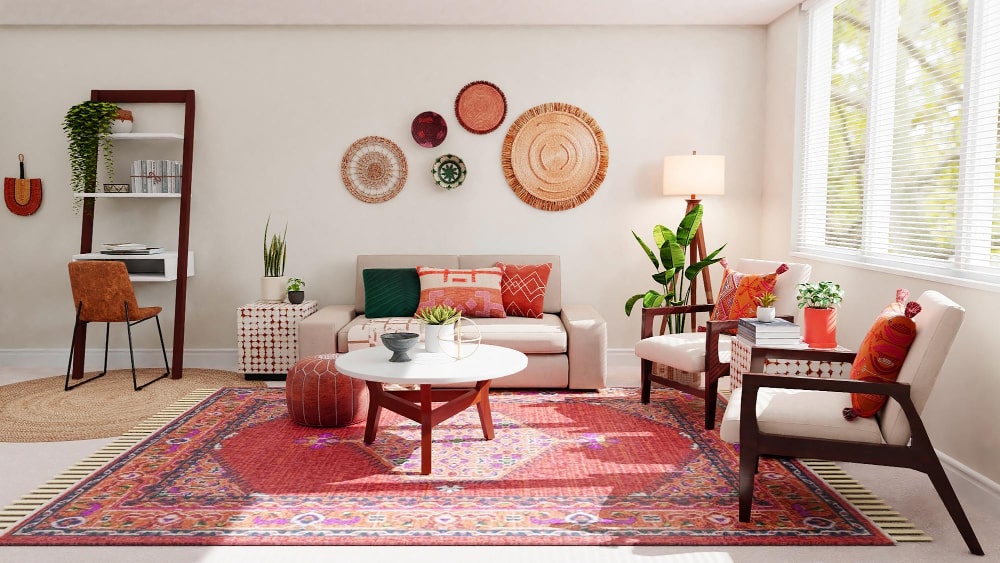Find top miami interior design professionals for customized luxury spaces.
Find top miami interior design professionals for customized luxury spaces.
Blog Article
Change Your Home With Necessary Principles of Interior Design and Looks
By recognizing the effect of shade theory and the importance of texture and patterns, one can create areas that are not only aesthetically appealing yet also deeply personal. Attaining this equilibrium involves more than simple decor; it incorporates a critical arrangement and a keen understanding of just how each aspect connects within a room.
Comprehending Color Theory
Recognizing the principles of shade concept allows designers to develop rooms that resonate psychologically with residents while fulfilling functional requirements. Each group plays a critical role in developing consistency within an area.
The psychological influence of shades is profound; warm hues such as reds and oranges evoke power and heat, while trendy tones like blues and eco-friendlies advertise peace and peace. The use of corresponding shades boosts visual rate of interest, developing striking contrasts that can elevate a room's appeal.
Neutral shades, on the other hand, work as a flexible backdrop, permitting other style elements to beam. It is necessary to take into consideration factors such as illumination and the area's function when selecting a color combination, as these can change the perception of colors throughout the day.
Ultimately, a well-considered color design can change an area, fostering a sense of convenience and style that lines up with the residents' choices. Proficiency of color concept is, as a result, an essential skill for any indoor designer aiming to create harmonious and inviting environments.
Achieving Balance in Layout
Exactly how can designers achieve a feeling of stability in their spaces? Achieving equilibrium in design is basic to developing harmonious insides.
Asymmetrical equilibrium, on the other hand, depends on differing aspects that still attain a cohesive look. This method permits even more vibrant and informal plans, offering interest while keeping equilibrium. By carefully choosing differing dimensions, shades, and appearances, developers can develop an aesthetically engaging space that feels balanced yet energetic.
Radial equilibrium stresses a central focal factor with aspects emitting outside. This style is commonly seen in round formats, where furniture and decoration develop a natural surround that draws the eye internal.
Inevitably, attaining equilibrium calls for thoughtful consideration of scale, proportion, and the connections in between aspects. interior design firms. By skillfully using these balance principles, designers can transform rooms right into environments that feel both visually pleasing and functionally unified, boosting the total experience for residents
Significance of Spatial Awareness

A keen feeling of spatial awareness allows designers to identify prime focus image source within a space, leading the audience's focus to vital features while keeping an overall sense of unity. It additionally helps in the tactical positioning of lighting, which can dramatically influence the understanding of space and mood. Recognizing spatial partnerships enables the designer to provide to the particular requirements of citizens, ensuring that each location serves its intended purpose without jeopardizing visual appeals.
Inevitably, spatial recognition is vital for maximizing the potential of any type of interior room. By thoroughly thinking about the interplay in between measurements, design, and feature, developers can create environments that not just meet sensible demands but likewise evoke a feeling of comfort and elegance, boosting the total living experience.
Including Texture and Patterns
Welcoming a diverse array of appearances and patterns can dramatically boost the visual and tactile appeal of an interior room. The critical use numerous materials-- such as timber, metal, textile, and stone-- creates depth and passion, making an area really feel much more welcoming and dynamic. As an example, incorporating smooth surface areas with harsh structures can establish a balance that draws the eye and engages the senses.
When incorporating patterns, consider both range and repetition. Big patterns can act as focal points, while smaller, subtle styles can match other elements without frustrating the room. Layering patterns, such as pairing floral paddings with striped throws, adds intricacy and a feeling of harmony if performed attentively.
It is additionally essential to preserve a cohesive shade scheme, making certain that textures and patterns work with each other as opposed to compete for attention. By picking a few key appearances and patterns, check out this site you can create a combined aesthetic that shows your personal style while boosting the overall atmosphere of the area. Ultimately, the careful incorporation of these components can transform a mundane room right into a sophisticated setting rich with personality and warmth.
Customizing Your Room
Producing a space that mirrors your character is important to accomplishing an absolutely welcoming setting. Personalization in interior decoration enables you to infuse your unique style and interests right into your home, changing it from a mere sanctuary right into a shelter that talks to that you are. Begin by selecting a color combination that reverberates with your feelings-- strong tones can invigorate, while soft tones offer tranquility.
Include art work and style that mirror your passions, whether it navigate to this website be travel, nature, or abstract ideas. Showing individual collections, such as books, photographs, or mementos, can evoke treasured memories and develop centerpieces within a space. Furthermore, think about personalizing useful pieces, like upholstered furnishings, to align with your aesthetic choices.

Final Thought
To conclude, the improvement of a home via the necessary principles of interior layout and visual appeal requires an extensive understanding of shade theory, equilibrium, spatial understanding, texture, and personalization. Each component adds considerably to developing an unified and useful living setting - Architecture Firm. By thoughtfully integrating these principles, people can improve the aesthetic charm and emotional vibration of their rooms, inevitably fostering a home that shows special identifications while providing comfort and usefulness
Report this page